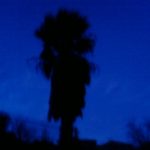On the occasion of the quarterly meeting of COPIL 06, its president, Benoit Kandel, and the representatives of partner municipalities of the intercommunal strategy against the Red Palm Weevil presented their report on the progression of the infection and the new biological treatments to address it.
After having colonized about ten European countries and six French departments, the Alpes-Maritimes has become the new destination for the red weevils. It must be said that with nearly 100,000 palm trees, the region’s plant heritage is appealing to them. To combat the infection, Benoit Kandel presented new legal measures this Tuesday at the quarterly meeting of the Steering Committee for the intercommunal azure strategy against the red palm weevils.
14 communities affected
According to the prefectoral decree of January 31, 2012, 14 communes in the Alpes-Maritimes have been declared contaminated by the weevil (Antibes, Biot, Cagnes-sur-Mer, Cannes, Gilette, Grasse, Le Cannet, Mandelieu La Napoule, Mougins, Nice, Saint-Martin du Var, Théoules-sur-Mer, Vallauris, Villeneuve-Loubet). With the establishment of safety zones of 100 meters around the concentration zone and buffer zones of 10 km, this text affects a much larger number of communes. A text legislates the policy to combat the progression of the red weevil infection at the national level, which is the ministerial decree of July 21, 2010. The Nice municipality joined this with a municipal decree on February 8, 2011, mandating the obligation to fight the weevil for every owner, public or private, of palm trees.
Favoring prevention
This fight policy is mainly based on prevention. Besides setting traps, it requires regular visual inspections to check if the fronds are drooping, one of the main symptoms of infection. If the palm is in a contaminated area, a preventive treatment is necessary. Any potential outbreak must be reported to the town hall, which will carry out a diagnosis. The plant must be treated within 15 days by a company that has completed ministry of agriculture-approved training. Depending on the condition of the palm, the following decisions can be made: either eliminate the infested part, apply a suitable treatment, or destroy it entirely if the bud is affected.




